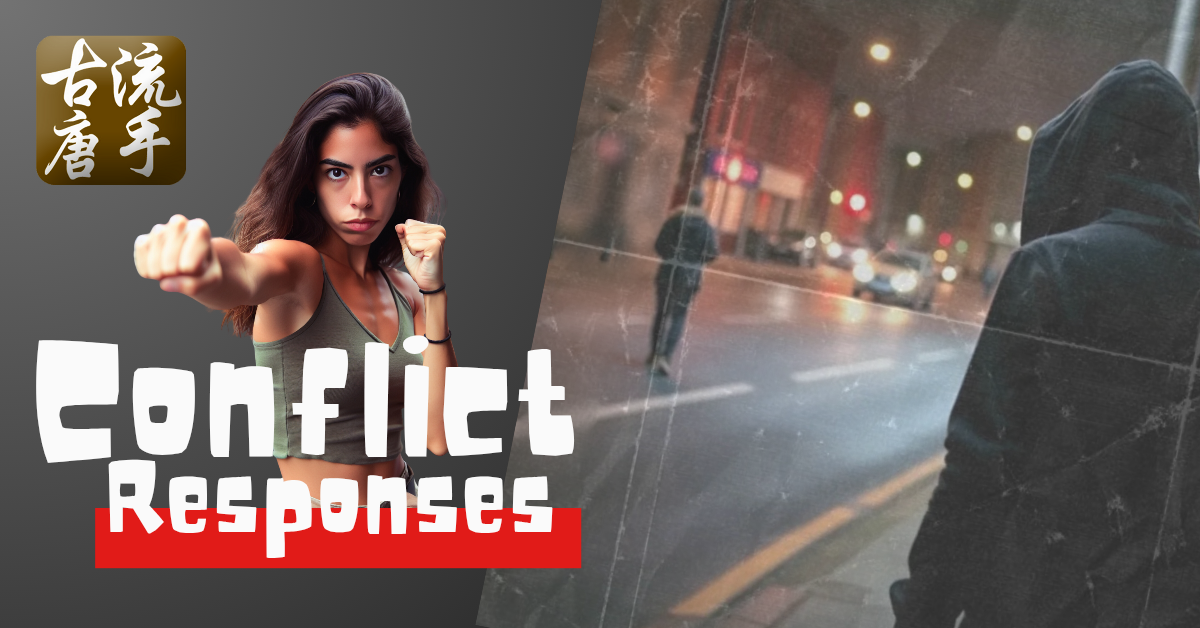Self-defense in the context of martial arts—now there’s a topic that has been discussed endlessly, yet still leaves room for fresh perspectives. What new insights could possibly be added to this well-trodden subject? Let’s start by acknowledging that many martial arts don’t actually focus on self-defense at all. Instead, they emphasize combat and fighting, which are fundamentally different. And, to be honest, most martial arts don’t even focus on combat. Traditional styles are often ritualized, while competitive systems are tailored to tournament rules and athletic performance.
However, all martial arts do address conflict. Conflict is as old as humanity itself—and that’s not a platitude. Managing it is one of the core challenges of human interaction, yet it’s often neglected in modern life. Physical altercations are just the tip of the iceberg, but they serve as a useful entry point for understanding conflict. Martial arts offer a physical, if not holistic, way to learn how to navigate and de-escalate tense situations.
What’s particularly interesting is how martial arts and self-defense systems often provide simple, linear solutions to escalation. Traditional martial arts tend to focus solely on the physical confrontation, lacking broader context. Modern self-defense systems, on the other hand, sometimes address the pre-fight and post-fight dynamics, including de-escalation strategies—though to varying degrees.
Competitive martial arts, meanwhile, occupy a gray area. On one hand, athletes in these systems are typically fit, possessing the strength and stamina to handle physical altercations. (Though, to be fair, a rugby player or ballet dancer could likely say the same—martial artists often underestimate the athleticism of dancers, whose endurance and pain tolerance are impressive.) On the other hand, the rules of competition can lead to unrealistic tactics, such as avoiding strikes to the face or groin. While competitive sparring may mimic real combat more closely than traditional forms, the emphasis on controlled aggression and winning at all costs doesn’t necessarily translate to a holistic self-defense mindset
Four Responses to Escalation in Martial Arts
Martial arts practitioners often gravitate toward one of four main responses to conflict, usually dictated by the system they train in. Let’s explore each in detail.
1. The "Hardness" Response
This approach is all about going "all in." As one of my teachers succinctly put it: “Rule one: I win. Rule two: There are no rules.” This mindset is common in modern self-defense systems, and the methods to achieve it are varied. While building physical strength and fitness is one way to ensure superiority in a fight, many systems also emphasize cultivating an assertive mentality.
Training to remain calm under pressure and transforming fear into aggression are key components of the hardness response. This requires more than just physical technique—adrenaline can easily derail overthinking, so mental resilience is crucial.
2. The "Softness" Response
Often underestimated, the softness response relies on adaptability. The goal is to absorb an attacker’s energy and use it against them, preventing them from reaching their full potential. This is the core philosophy of Aikido, Judo, and many Chinese martial arts, especially the internal styles. It’s about understanding the attacker on a tactile level, not just analyzing their tactics.
While this may sound simple, it demands extensive practice—and, ideally, a natural aptitude for anticipation. Haptic training, which focuses on physical interaction and body awareness, is invaluable, even if it’s difficult to master in the context of actual conflict.
3. The "Trigger" Response
This sophisticated concept builds on the softness response. It’s not just about reading an opponent’s movements but actively provoking them to create exploitable openings. Many competitive fighters excel at this, often unconsciously. In Chinese martial arts, the idea of “asking for force” is central. Training methods like sticky hands, push hands, and kakie in Karate are designed to develop this skill, though they’re often misunderstood or dismissed as unrealistic.
4. The "Control" Response
Here, the goal is to manage the escalating situation at every stage—before, during, and after the confrontation. The aim is to subdue the attacker in a way that not only ends the conflict but also influences future interactions, whether with the opponent or witnesses. Early control, including the use of rhetorical de-escalation, is ideal for avoiding physical confrontation altogether.
The Bigger Picture
All of these responses occur after escalation. But good martial arts should address more than just surviving—or winning—a fight. Why do we fight in the first place? How can we avoid it? What outcomes do we want from a conflict? These are broader questions that deserve attention, though they’re beyond the scope of this post.
At Missing Link Martial Arts, we incorporate all four responses into our training, tailored to each student’s unique talents and approach. We use tools like the five elements of traditional Chinese philosophy and animal forms from Kung Fu to analyze and explore different situations and responses. This holistic approach requires time, experience, and practice—which is why we view martial arts as a lifelong journey that never loses its relevance.
For short-term self-defense courses, however, we take a different approach. These classes are stripped of complexity, focusing solely on survival rather than the broader, richer aspects of martial arts. While effective, this reduction is a loss of the deeper, transformative elements that make martial arts a profound and rewarding endeavor.


